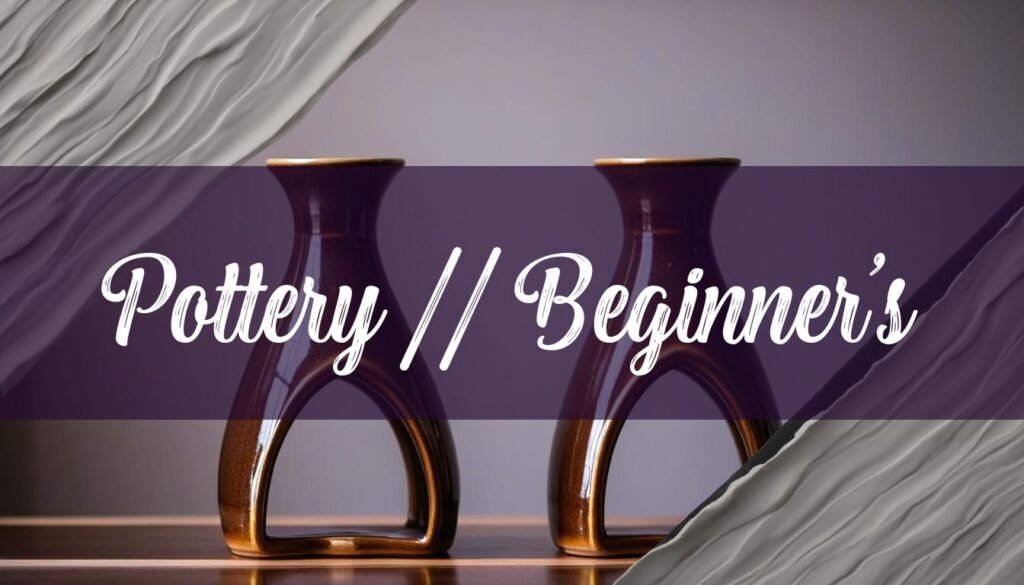Learning pottery at home is an achievable and rewarding pursuit, blending creativity with the satisfaction of crafting functional and decorative objects. With accessible techniques and readily available materials, aspiring potters can embark on this journey without the need for a formal studio. This guide will illuminate the path for beginners, focusing on hand-building methods, clay selection, essential tools, and alternative firing techniques for the at-home pottery enthusiast.
Essential Tools and Materials
To begin your pottery adventure, you’ll need to gather a few essential tools and materials. The foundation of your work will be clay, and for beginners, stoneware is often recommended due to its versatility and forgiving nature. Stoneware clay bodies are usually smooth and plastic enough for wheel throwing but still structurally strong enough for hand building. In addition to clay, a basic set of sculpting tools is crucial. These include a rib for shaping and smoothing clay, trimming tools for scraping away excess material, and sponges for burnishing and cleaning. A wire cutter is essential for dividing clay blocks and removing pieces from your work surface, while a needle tool aids in trimming, etching, and creating precise holes. Brushes are indispensable for applying slip—a wet clay mixture used to join clay pieces—and for glazing your finished work. Lastly, don’t forget an apron and towels to keep your workspace clean and yourself protected. Calipers are used to measure the inner and outer dimensions of pots. If you’re looking to start teaching pottery, you may also find this guide to teaching pottery classes helpful.
Hand-Building Techniques
Hand-building offers a direct and intimate way to engage with clay, allowing you to create forms without a pottery wheel. Three fundamental techniques—pinch pots, coil building, and slab construction—form the basis of most hand-built pottery. The pinch pot method involves starting with a ball of clay and using your fingers and thumb to pinch and rotate the clay, gradually creating a hollow form. This technique is excellent for small bowls and vessels, allowing you to feel the clay transform in your hands. Coil building is a technique where you roll out long, even coils of clay and stack them on top of each other, joining them together to build the walls of your piece. This method allows for taller and more complex forms. Slab construction involves rolling out flat slabs of clay and cutting them into shapes that can be assembled to create various forms, such as boxes, plates, and angular vessels. Each technique offers unique possibilities and can be combined to create intricate and personalized pottery pieces. When making coil pottery there is no technique as important as your bonding pinch.
Clay Properties, Wedging, Drying, and Firing
Understanding clay properties is essential for successful pottery making. Different types of clay have varying levels of plasticity, shrinkage, and firing temperatures. Stoneware is a versatile choice for beginners because it is easy to work with and fires to a durable, non-porous finish. Wedging is a crucial step in preparing clay for use, as it removes air pockets and ensures a consistent texture. This process involves kneading the clay in a specific way to align the clay particles and eliminate trapped air, which can cause explosions during firing. Proper drying is also vital to prevent cracking. Pottery should be dried slowly and evenly, away from direct sunlight and drafts. Covering the pieces with plastic initially can help control the drying process. Firing pottery at home without a kiln presents challenges, but alternative methods like pit firing or using a raku technique can be explored. These methods require careful planning, safety precautions, and may not achieve the same results as a traditional kiln firing. Although individual clays vary in their maturation temperature, most clays will become earthenware ceramics at around 700° Celsius or about 1300° Fahrenheit. If you are using local clay, you may want to read this potters guide to local clay sourcing.





